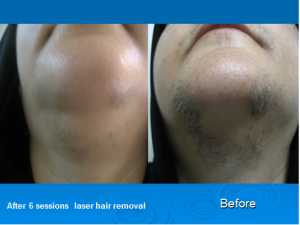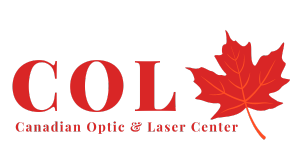The primary principle of laser hair removal is selective photothermolysis (SPTL), the matching of a specific wavelength of light and pulse duration to obtain optimal effect on a targeted tissue with minimal effect on surrounding tissue. Lasers can cause localized damage by selectively heating dark target matter, melanin, in the area that causes hair growth, the follicle, while not heating the rest of the skin. Light is absorbed by dark objects, so laser energy can be absorbed by dark material in the skin, but with much more speed and intensity. This dark target matter, or chromophore, can be naturally-occurring or artificially introduced.
Melanin is considered the primary chromophore for all hair removal lasers currently on the market. Melanin occurs naturally in the skin, and gives skin and hair their color. Because of the selective absorption of photons of laser light, only black or brown hair can be removed. Laser works best with dark coarse hair. Light skin and dark hair are an ideal combination, being most effective and producing the best results.

Tanned Skin and Laser Light Energy
People with tanned skin have been usually discouraged from traditional laser hair removal treatments because tanning changes their natural skin pigmentation. During a laser hair removal procedure, light energy is directed to the skin where unwanted hair is located. The skin absorbs some of the laser energy before it reaches the hair follicles. How much energy is absorbed will be determined by the skin color. Tanned skin will usually absorb excess amounts of light energy and can cause burning or discoloration after treatment. Therefore, to treat a tanned patient, the laser energy must be turned down to prevent burning. This, in turn, decreases the effectiveness of the light energy to kill unwanted hair follicles. After tanning you should wait for 4-8 weeks, depending on your skin color, to start laser hair removal.
* The results may vary from person to person.
